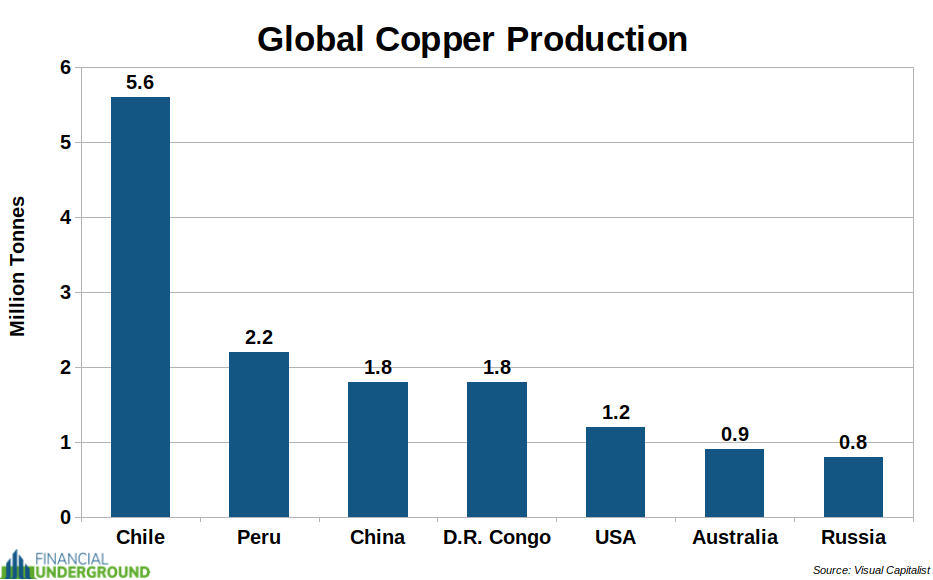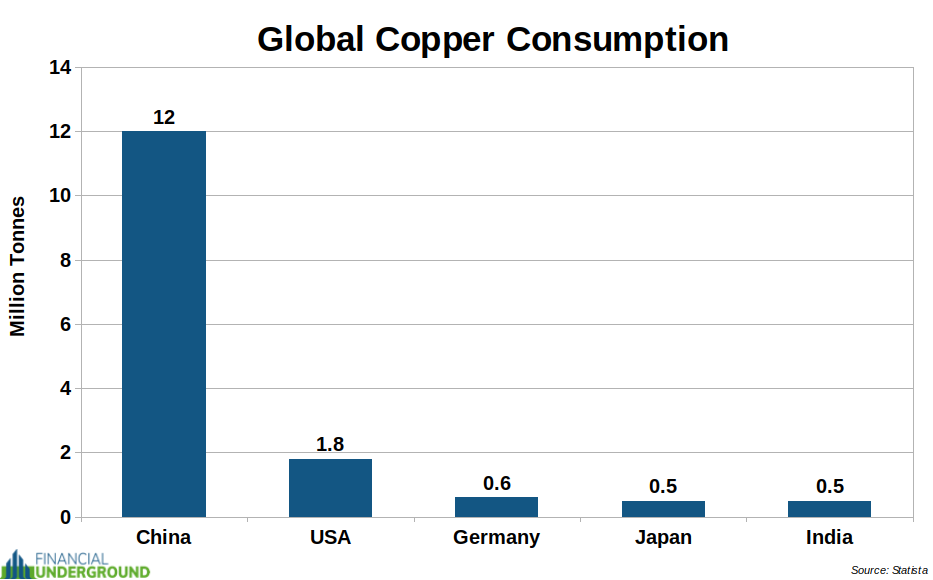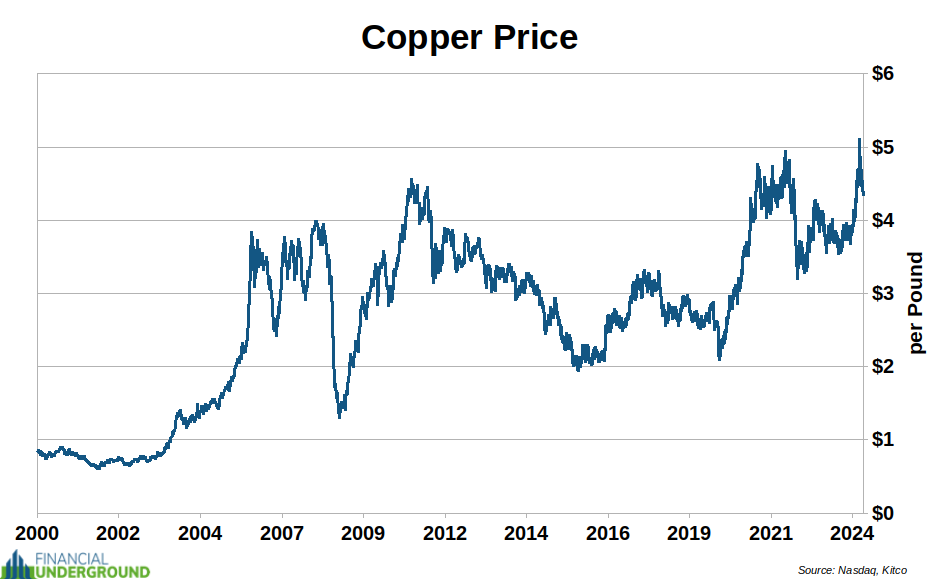Russia, China, and their allies want to change the US-led world order that has been in place since the end of World War 2.
The conflict is playing out on a level that is below the threshold of direct kinetic warfare because that could invite a nuclear Armageddon.
As I see it, World War 3 is a conflict between two geopolitical blocks: NATO & Friends and BRICS+.
In short, BRICS+ wants to transform the current world order from unipolar to multipolar and give themselves a bigger seat at the table in the process. NATO & Friends want the unipolar status quo to prevail. That’s World War 3, and it’s happening right now.
As I’ve written about recently, I believe it is highly likely that BRICS+ will be successful in WW3, which means we’re likely to see the end of the unipolar world order and the emergence of a multipolar world order.
Many people will be unprepared for that change of historical significance. However, when you look at the Big Picture, that is where I think we’re headed. I believe there are two prominent investment outcomes we can bet on.
Investment Outcome #1: The US Dollar Will Lose Its Privileged Position
While the US dollar is currently the leading global currency, it was already on a path of inevitable debasement and eventual collapse—even before considering the compounding effects of the collapse of the US-led world order.
The only reason the US government has managed to avoid severe consequences from its inflationary monetary policies is the US dollar’s status as the world’s premiere reserve currency, thanks to Washington’s military and economic dominance that has prevailed since the end of World War 2. However, as this dominance wanes, so will the dollar’s purchasing power.
The US government’s ability to hide the effects of its rampant money printing by offloading trillions of dollars to foreigners is nearing its end.
That’s terrible news for the US dollar.
That doesn’t mean I’m excited about whatever new monetary concoction BRICS+ comes up with. Ultimately, it will be nothing more than the liability of a new group of corrupt politicians and bureaucrats.
I suspect many worldwide will feel the same way and look for apolitical, free-market, monetary alternatives resistant to debasement—like gold and Bitcoin.
As World War 3 plays out, I expect we’ll see a multipolar world order emerge as the unipolar world order wanes and the US dollar loses its privileged position as the world’s premier reserve asset.
An ocean of capital could flow into gold and Bitcoin as the world looks for sound monetary alternatives to the fading US dollar and whatever scheme the BRICS+ countries cook up.
That’s why I think World War 3 and the emergence of a multipolar world order will accelerate two major investment trends already in motion: the re-monetization of gold and Bitcoin’s potential emergence as the world’s dominant money.
Investment Outcome #2: A Scramble for Strategic Commodities
The end of the unipolar world orders means transitioning to a multipolar global trade regime—with serious implications for commodities.
While there is already an ongoing financial and economic war between NATO & Friends and BRICS+, I expect disruptions in trade in strategic commodities to grow substantially as World War 3 heats up in the coming months.
Supply disruptions mean higher prices. That’s an outcome I think we can bet on.
On the demand side, I expect NATO & Friends and BRICS+ will increasingly focus on securing critical commodities and ensuring access to stable supplies.
In short, I think World War 3 will cause increased demand and unstable supplies.
That’s why obtaining exposure to strategic commodities such as rare earth elements, uranium, copper, and hydrocarbons could be a winning move.
Today, I want to take a closer look at copper.
The Red Metal
Due to its unique properties, copper is a vital commodity widely used across various industries. It is an element listed on the Periodic Table as Cu, with atomic number 29.
Copper is one of a few metals found in nature in a directly usable form, known as native metals. This characteristic led to its use by humans as early as around 8000 BC.
Thousands of years later, it became the first metal to be extracted from sulfide ores, around 5000 BC; the first metal to be cast into molds, around 4000 BC; and the first metal to be intentionally combined with another metal, tin, to produce bronze, around 3500 BC.
During the Roman period, the primary source of copper was Cyprus, which inspired the metal’s name.
Copper’s high electrical and thermal conductivity, ductility, and corrosion resistance make it an ideal material for numerous applications in construction and electronics.
Copper’s strong correlation with global economic growth has earned it the nickname "Dr. Copper." This is due to its widespread use across various industries and sensitivity to economic fluctuations. As a result, changes in copper prices can serve as a vital indicator of the overall health of the global economy.
A rise in copper prices typically suggests strong economic growth, indicating increased demand for copper-intensive products and services.
Conversely, falling copper prices can signal a slowing economy or contraction, as reduced demand for copper-intensive products reflects a decline in industrial activity and investment.
Copper’s Geopolitical Significance
Copper is a strategic resource due to its extensive use in critical industries such as defense, aerospace, and telecommunications.
Copper’s geopolitical significance stems from its crucial role in the global economy and its uneven distribution globally. A few countries, such as Chile and Peru, hold significant shares of global reserves.
A few key players dominate the landscape of the largest copper-producing countries and companies.
The Escondida mine in Chile is the world’s largest copper mine.
Chile’s state-owned company, Codelco, is Chile’s largest copper mining company and the world’s largest copper producer. Major mining operations include the Chuquicamata, El Teniente, and Andina mines.
Peru is the world’s second-largest copper producer. The country’s significant mining operations include the Antamina and Las Bambas mines.
China is the third-largest copper producer. The country’s largest copper mining companies include Jiangxi Copper Corporation and Zijin Mining Group.
The US ranks as the fourth-largest copper producer. The largest copper mines in the US are the Morenci mine in Arizona and the Bingham Canyon mine in Utah, operated by Freeport-McMoRan (NYSE:FCX) and Rio Tinto (NYSE:RIO), respectively.
Australia is the fifth-largest copper producer in the world. Its largest copper mines are the Olympic Dam mine in South Australia, operated by BHP, and the Cadia mine in New South Wales, operated by Newcrest Mining (OTC:NCMGF).
Glencore (OTC:GLNCY) (Switzerland) is a major commodities trading and mining company, with copper production reaching around 1.2 million metric tons in 2020.
The company operates the Katanga mine in the Democratic Republic of Congo and the Antapaccay mine in Peru.
China is by far the largest consumer of copper in the world, accounting for approximately 50% of global copper consumption. China’s rapid industrialization, urbanization, and infrastructure development drive its copper consumption.
The US is the second-largest consumer of copper globally. The American economy’s size and diversity contribute to its significant copper demand across various sectors.
Germany is the third-largest copper consumer. The country’s strong manufacturing and industrial sectors drive its copper demand.
Japan is the fourth-largest copper consumer in the world. Its advanced manufacturing and electronics industries contribute to its high copper consumption.
India is the fifth-largest copper consumer. As the country continues to industrialize and urbanize, its demand for copper is expected to grow further.
Over the past 25 years, copper prices have experienced significant fluctuations driven by various factors, including global economic conditions, technological advancements, and supply and demand dynamics.
Copper prices started to rise in the early 2000s as China became a significant demand driver due to its rapid industrialization and urbanization. This led to a sharp rise in copper prices, peaking at around $4.50 per pound in 2006.
Copper prices plummeted during the global financial crisis of 2008-2009, falling to around $1.50 per pound as demand weakened amid economic uncertainty. However, the decline was short-lived, and copper prices quickly recovered.
Copper prices peaked at around $4.60 per pound in 2011, driven by solid demand from China and supply constraints in major copper-producing countries.
Today, copper prices are hovering between $4 and $5 per pound, near an all-time high. However, they could catapult much higher amid tightening supply.
The main driver behind the recent surge in copper prices is a sudden reduction in global mine supplies, primarily due to the closure of a massive mine in Panama last year.
This mine, owned by First Quantum Minerals (OTC:FQVLF), was shut down by the Panamanian government after the country’s Supreme Court ruled that the 20-year concession granted to the Canadian company was unconstitutional. The Panamanian President announced that the process for the orderly and safe mine closure had begun. This particular mine was responsible for producing about 1.5% of the world’s copper supply.
The global copper industry faces challenges as many existing mines age and deplete, while the demand for copper continues to grow at around 2-3% per year. This consistent increase in demand requires a corresponding rise in copper production.
As older mines become less productive and few new mines are being developed, the gap between supply and demand widens. This imbalance is already causing shortages, and I expect it will push copper prices even higher.
In addition to the supply crunch, geopolitical tensions are the most compelling catalyst for higher copper prices as countries strive to secure strategic resources to maintain their economic growth and technological advancements.
